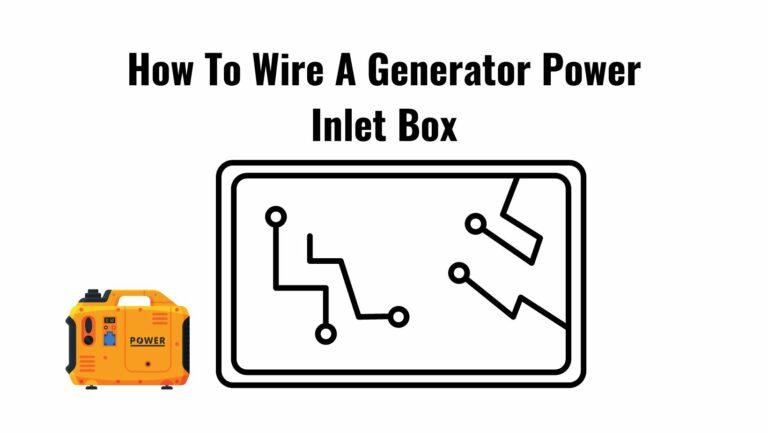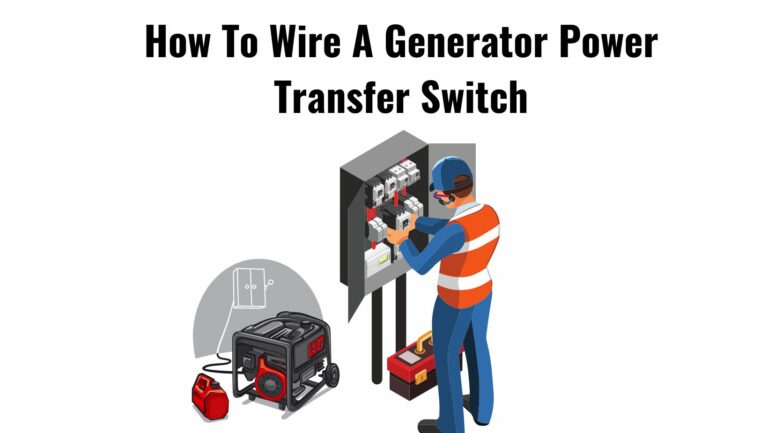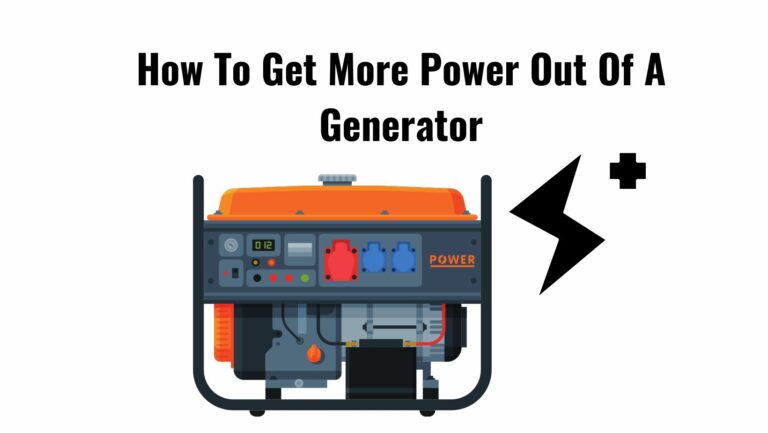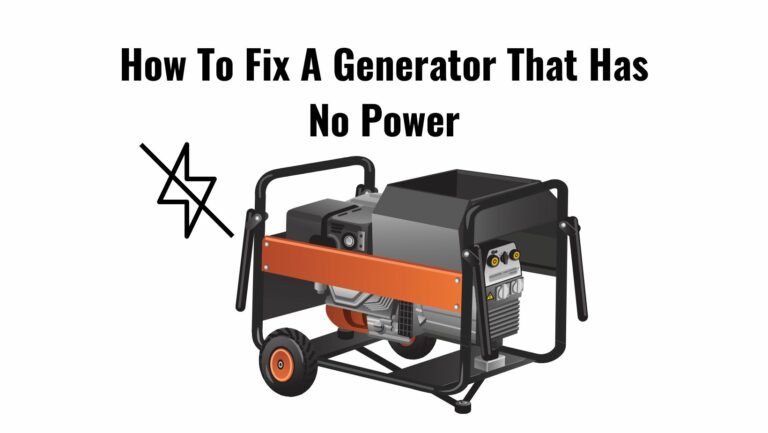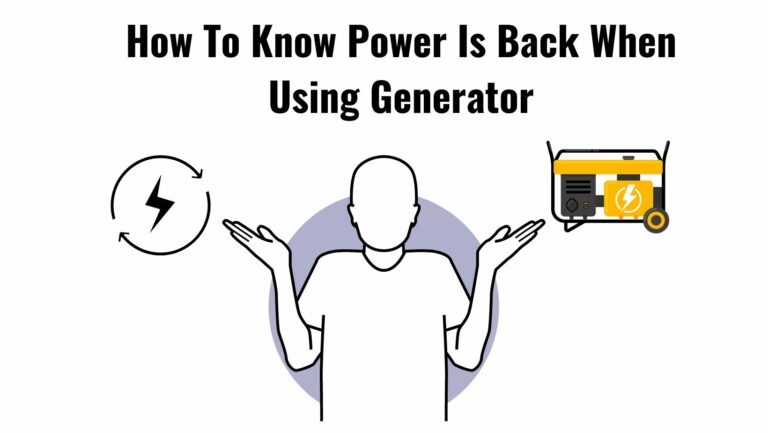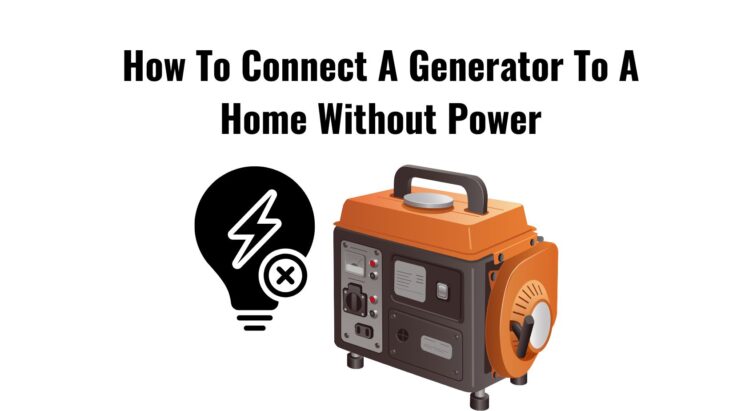
In today’s world, having a reliable backup power source is essential, especially in the face of unexpected power outages. A generator can provide you with the peace of mind that you need during such events, ensuring that your essential appliances and devices remain powered.
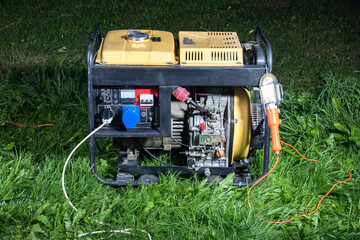
However, connecting a generator to your home can seem like a daunting task, especially if you don’t have the right tools or knowledge. That’s why we’ve created this guide to help you connect your generator to your home with no power tools.
Whether you’re a seasoned DIY enthusiast or just starting out, this guide will walk you through each step of the process, providing you with the information you need to connect your generator safely and effectively. So, let’s get started!
Preparation Before Connecting a Generator
Connecting a generator to your home can be a simple and straightforward process, but it’s essential to prepare yourself, your home, and your equipment to ensure a safe and successful setup. In this section, we’ll discuss safety precautions, tools and equipment needed, and the location for generator setup.
Safety Precautions:
- Always turn off the main power supply to your home before connecting a generator.
- Make sure to use a generator that’s appropriate for the size of your home and the power requirements of your appliances.
- Never plug a generator into a wall outlet. This is a dangerous and illegal practice.
- Make sure the generator is properly grounded.
- Always wear appropriate safety gear, such as gloves, glasses, and work boots, when working with electrical equipment.
Tools and Equipment Needed:
- Generator set for backup electricity
- Double outlet receptacle kit for a clean electrical connection
- Three-prong round plug and wire for connecting the power inlet box to the portable generator
- Power consumption watt tester for reading the wattage produced by your portable generator
- Extension cord for connecting the power inlet inside to the generator
- Hand drill for making a hole in the wall
- Oscillating tools to cut out drywall
- Philip screw for fixing the receptacle
- Safety gear for additional safety since you are working with power tools
- Metal waterproof box for keeping the line safe from any possible damage
- Sealant for making a solid waterproof installation
Location for Generator Setup:
The ideal location for a generator setup is a flat and level surface that’s protected from the elements. The generator should be placed at least 3 feet away from your home to prevent carbon monoxide from entering your home. Make sure to place the generator in a location where the exhaust fumes won’t be directed toward windows or doors.
How to Connect a Generator to Your Home Without Power Tools: A Step-by-Step Guide
Step 1: Find a Place for the Outlet Utility Box
The first step in connecting a generator to your home is finding a suitable location for the outlet utility box. This box serves as the connection point between the generator and your home’s electrical system, so it’s important to choose a location that is close to your generator and near an electrical outlet.
Step 2: Drill a Hole for the Generator Cables
Next, you’ll need to drill a hole in your wall to run the generator cables into the outlet. Make sure the hole is large enough for the cables to fit through comfortably, and take all necessary safety precautions while drilling.
Step 3: Install The Waterproof Box
After drilling the hole, you’ll need to install the waterproof box outside your wall. This box will protect the electrical connection from any possible damage.
Step 4: Connect the Wire to the Outlet
Connect the wire from the generator to the outlet inside your home. This will provide power to the generator and allow you to use your appliances and devices during a power outage.
Step 5: Connect the Generator and Test it
Finally, connect your generator to the outlet and test it. If everything is working correctly, you should now be able to use your generator as a backup power source.
Tips for Running and Maintaining the Generator
Generators are an essential tool during power outages, and it’s crucial to keep them in good condition. Proper care and maintenance will not only ensure the generator’s longevity but also prevent any safety hazards that might arise. Here are some tips to help you run and maintain your generator.
Proper fueling and oil level
Ensure that you have the correct type of fuel for your generator and that it’s stored in a safe and secure place. Regularly check the fuel level to ensure that the generator won’t run out of fuel in an emergency. Also, make sure you keep the oil level at the recommended level as specified in the manufacturer’s instructions.
Regular maintenance and cleaning
Regular maintenance is essential for the longevity and performance of your generator. This may include changing the oil and air filter, checking the spark plugs, and cleaning the exterior of the generator. Regular maintenance will also help to prevent any potential problems before they occur.
FAQs
Can you permanently run a house on a generator?
While it is possible to run a house on a generator for a prolonged period, it is not recommended to run a generator for longer than 500 hours continuously. On average, a standby generator can run for up to 3,000 hours, providing power to a medium-sized home.
Can I plug my generator into a wall outlet for power?
No, it is not recommended to plug a generator into a wall outlet as it is a dangerous and illegal way to power your home appliances.
How does a whole house generator work without electricity?
Electricity can’t power standby generators, so they run on gasoline, propane, or natural gas. This makes them an ideal solution for backup power during a power outage.
How many appliances and devices can I use with a 3000 Watts Generator?
The number of appliances and devices you can use with a 3000 watts generator will depend on the total wattage of all the devices you plan to run. You can use a power consumption watt tester to determine the total wattage of your devices and ensure that the generator can handle the load.
Will a 15-Kilowatt Generator Run a House?
A 15-kilowatt generator is a large generator that can provide power to an entire home, depending on the size of the home and the number of appliances and devices you want to run. It is always best to consult with an electrician to determine the right generator size for your home.

